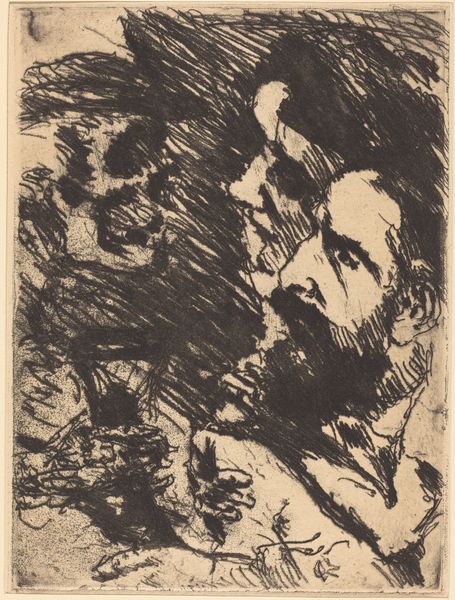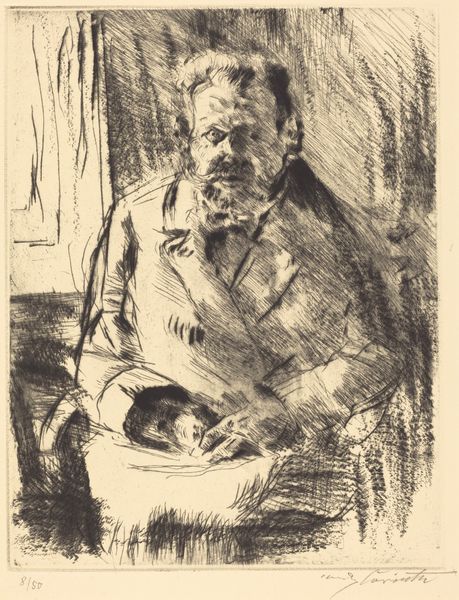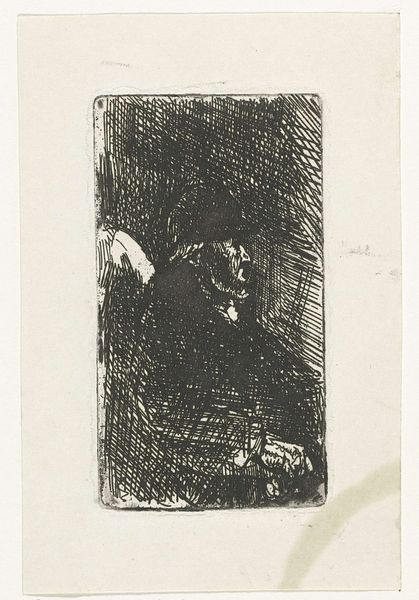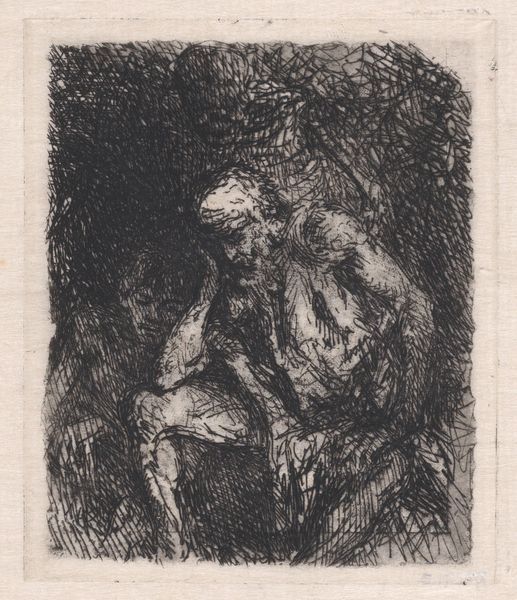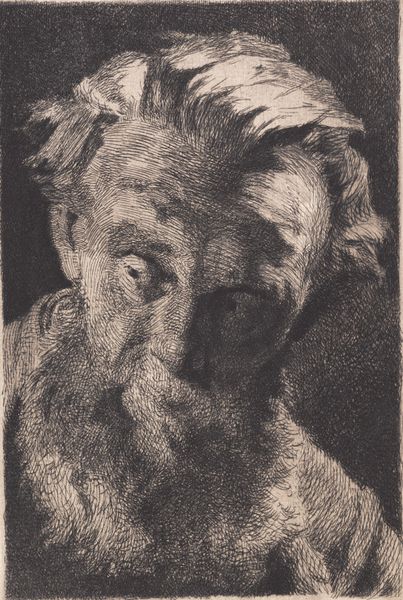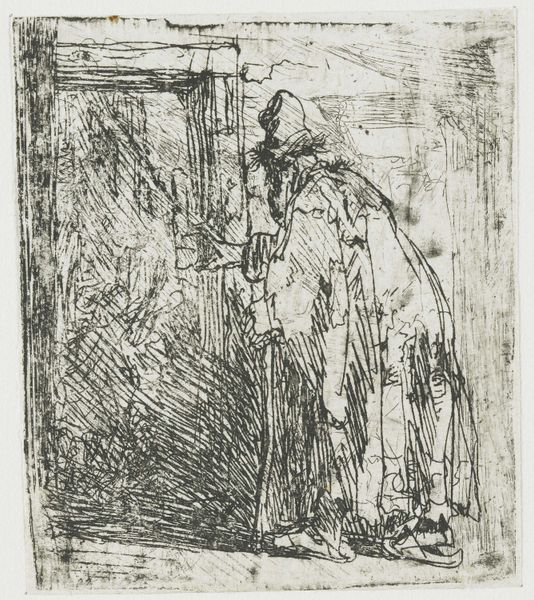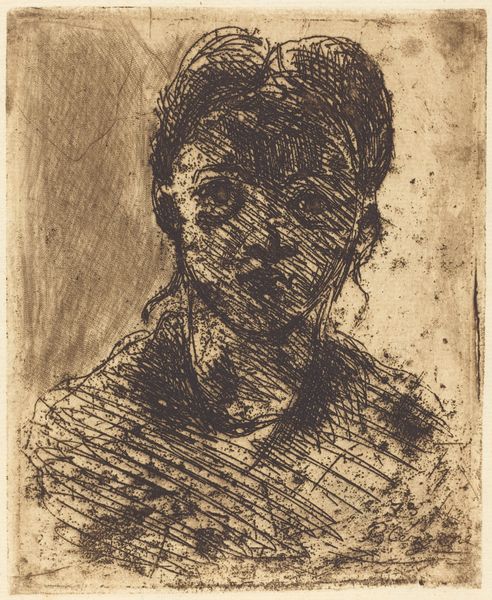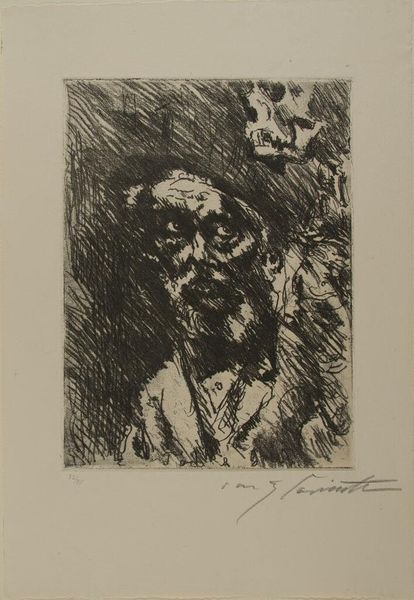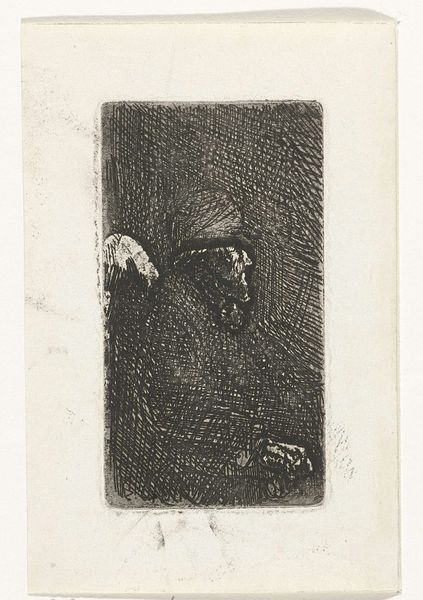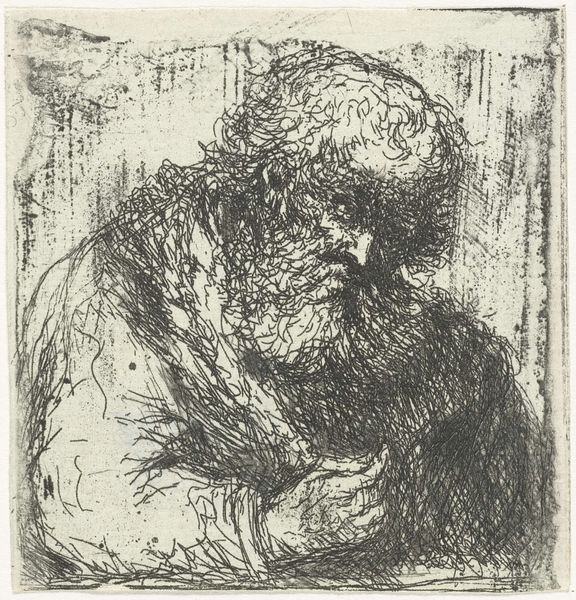
drawing, print, ink
#
portrait
#
drawing
#
ink drawing
# print
#
pen sketch
#
german-expressionism
#
figuration
#
form
#
ink
#
expressionism
#
line
Dimensions: plate: 23.8 x 17.6 cm (9 3/8 x 6 15/16 in.) sheet: 30 x 24 cm (11 13/16 x 9 7/16 in.)
Copyright: National Gallery of Art: CC0 1.0
Lovis Corinth created this etching, "Death and the Old Man", sometime between the late 19th and early 20th centuries. It’s a stark image, typical of the period's obsession with mortality. Corinth was working in Germany, a society wrestling with rapid industrialization and social change. The turn of the century saw both great optimism and deep anxiety, reflected in art that often confronted difficult truths about human existence. Here, the skeletal figure of Death looms over an aging man, a visual metaphor for the inevitable end that awaits us all. The rough, expressive lines of the etching enhance the sense of unease and highlight the psychological weight of the scene. To fully understand this piece, one might delve into the cultural and intellectual history of the era, exploring philosophical texts, literary works, and even medical discourses on aging and mortality. The meaning of art is always contingent on its historical moment.
Comments
No comments
Be the first to comment and join the conversation on the ultimate creative platform.
